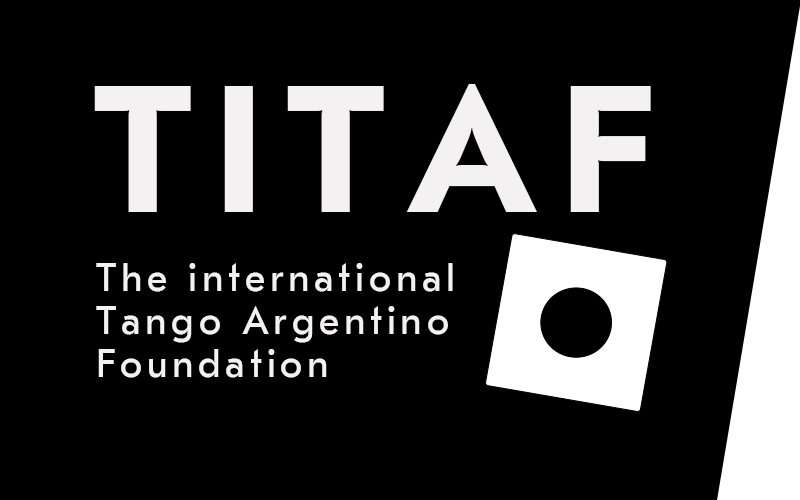El Bandoneón Mayor
Aníbal 'Pichuco' Troilo
A legendary Argentine bandoneonist and orchestra director, known for his virtuosity and innovative contributions to tango.
The TITAF Foundation, inaugurated in Argentina in 2024, addresses "Troilo en TK" as its first project
Why this particular project?
The artistic value of these recordings is indisputable; it is undoubtedly the most creative period of Troilo in terms of his rich musical production. Unfortunately, the media published at that time, such as shellac and vinyl records, cannot match this quality.
With all our accumulated experience with TangoTunes over the past 10 years, we will do everything possible to make this music resonate with the best sound quality possible.
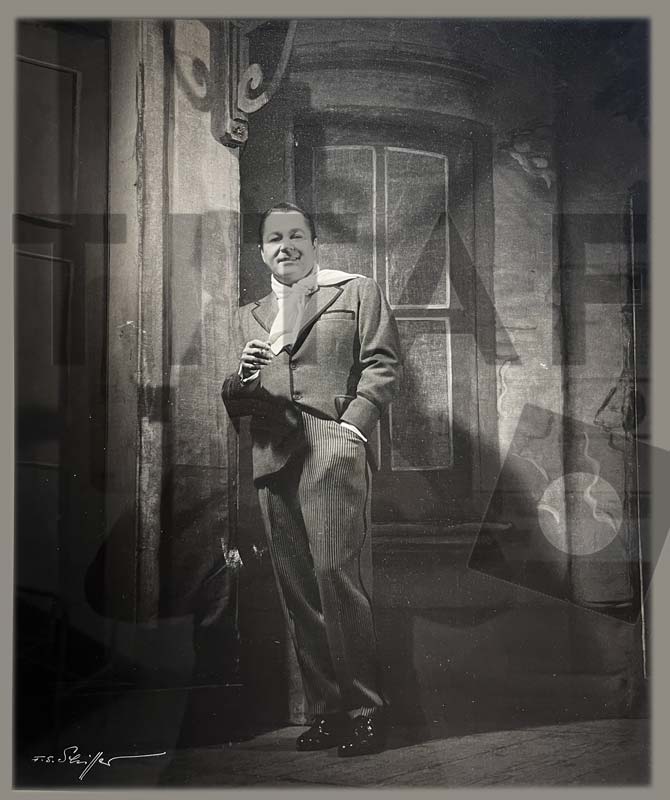

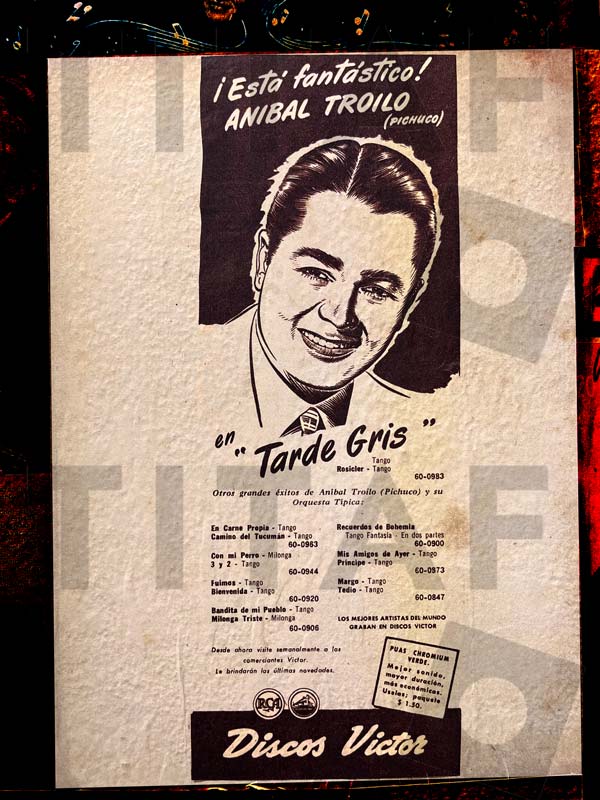

The recordings with Victor in the (late) 1940s.
In the late 1940s, Aníbal Troilo was at the peak of his musical career. During this period, he recorded numerous pieces with the Victor label before switching to TK. These recordings stood out for their technical excellence and artistic depth. Troilo, also known as "Pichuco," worked closely with prominent musicians and singers like Francisco Fiorentino, whose death in 1955 deeply affected him. The recordings with Victor are characterized by a rich orchestral sound and innovative arrangements that enriched traditional tango with new elements. Works such as "Sur" and "Quejas de bandoneón" (though recorded in 1944) are among the most important of this era and demonstrate Troilo's ability to combine emotional depth and technical brilliance. These recordings laid the foundation for his later successes and paved the way for his time with TK, where he continued to refine his style and explore new creative avenues.
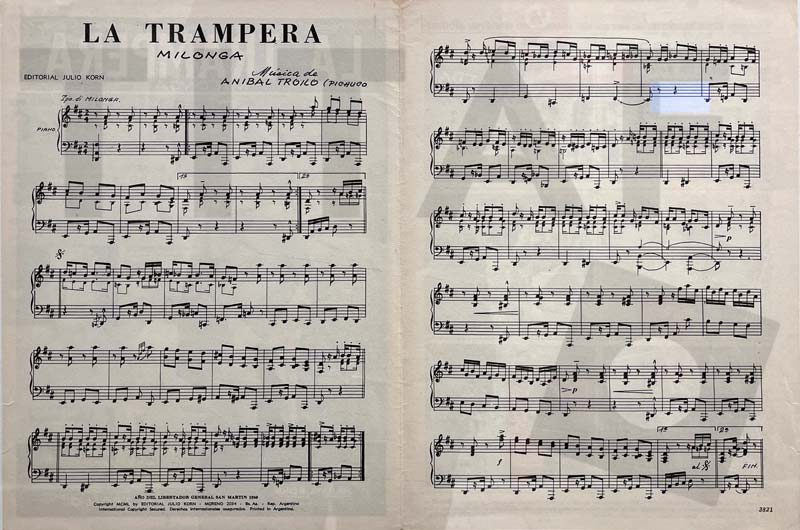

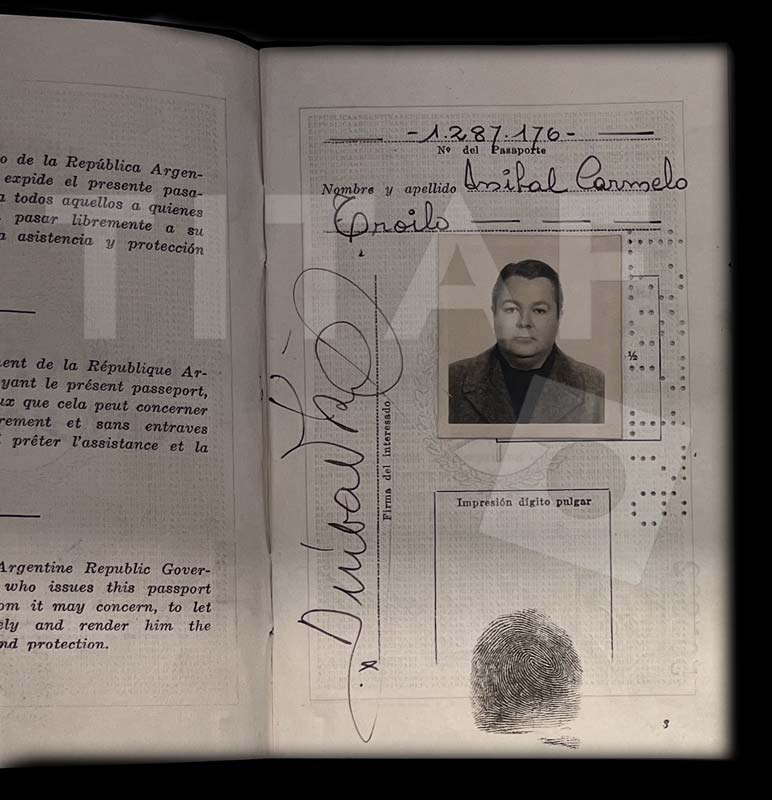

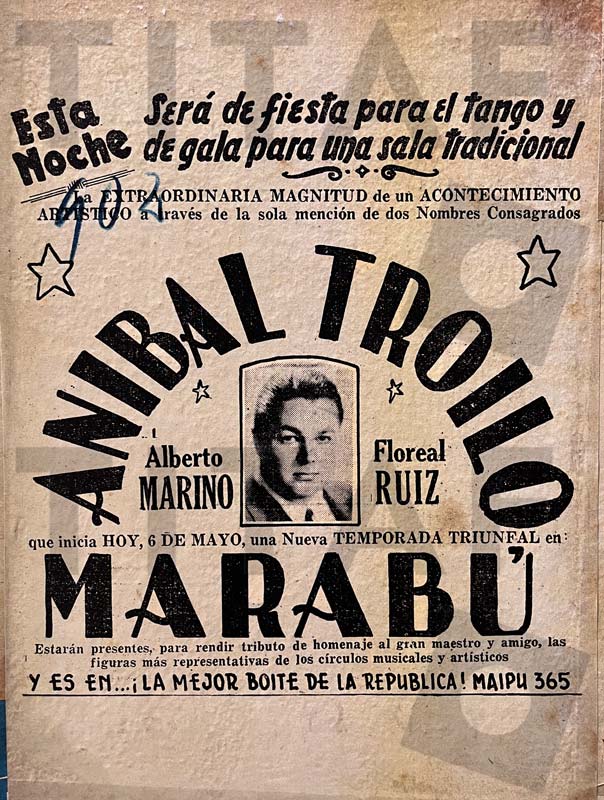

Aníbal Troilo, La trampera, tk, 1951
Aníbal Troilo, Discepolín, canta Raúl Berón, tk, 1951
otra curva de ecualización
Aníbal Troilo, Discepolín, canta Raúl Berón, tk, 1951
Aníbal Troilo, Prepárense, tk, 1951
Aníbal Troilo, Responso, tk, 1951


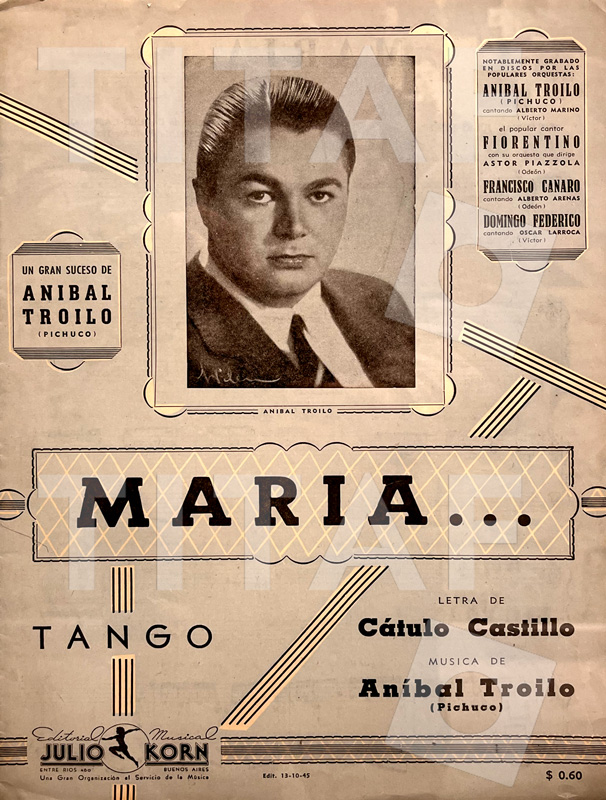

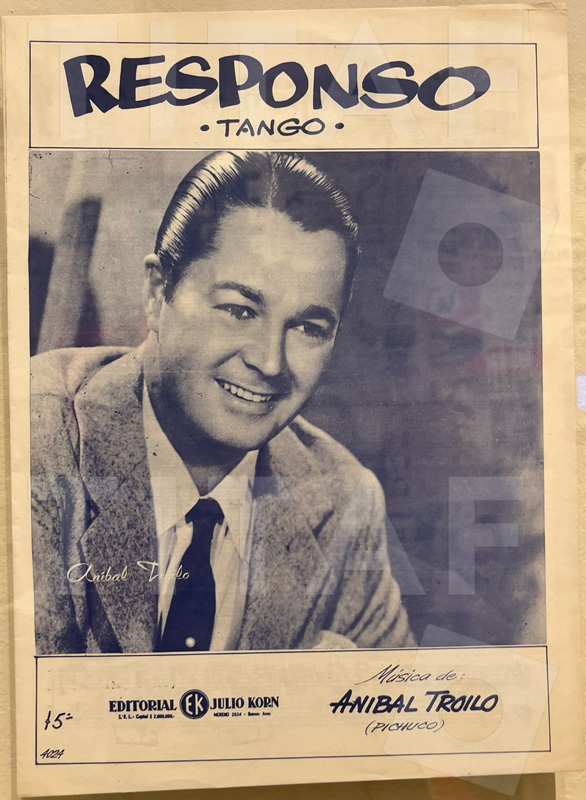

The TK era
The 1950s were a decisive period in the career of Aníbal Troilo, marked by his switch to the TK record label. This era was filled with both personal and professional challenges and changes that would profoundly influence his music and tango in general.
In the early 1950s, Troilo began working closely with Astor Piazzolla, who acted as an arranger and composer. This collaboration had a significant impact on his music. Piazzolla, known for his innovative approach and ability to integrate complex musical structures, brought a new level of sophistication to Troilo's repertoire. Works like "Para lucirse," "Triunfal," and "Lo que vendrá" are clear examples of this fruitful association. These compositions not only modernized tango but also enriched it with new harmonic and rhythmic concepts.
However, the recordings with TK were not without problems. Poor recording conditions and technical issues affected the quality of the produced records. Despite these difficulties, Troilo managed to create a series of masterpieces that have endured over time and are still considered tango classics. His collaboration with poet Cátulo Castillo during this period was particularly significant. Together, they produced some of the most emotional and profound pieces in Troilo's repertoire. "La última curda," for instance, stands out for both its musical complexity and the intensity of its lyrics, reflecting a deep sense of melancholy and despair.
Regarding formations and instrumentation, Troilo experimented with different configurations. The inclusion of Roberto Grela on guitar was a notable change that added a new sonic dimension to his music. The recordings of the Troilo-Grela quartet showcased a more intimate and chamber-like side of tango, highlighting Troilo's versatility as a musician. These sessions stood out for their ability to combine technical sophistication with deep emotional expressiveness.
Personal and professional setbacks also marked this era. Despite these challenges, Troilo maintained his creative energy. His ability to constantly evolve and explore new musical horizons kept him at the center of the tango world throughout the decade. Despite the difficulties, Troilo continued composing and recording, demonstrating remarkable resilience and an unwavering passion for his art.
The impact of the collaboration with Piazzolla was evident in pieces like "Para lucirse." This work, although titled in a way that might suggest musical fireworks, is actually a piece of great depth. Troilo's interpretation brings the work to expressive heights that anticipate the musical characteristics that would mark the years to come. Through Troilo, Piazzolla managed to bring his experimental and avant-garde ideas to a broader audience, forever changing the perception of tango.
Another notable collaboration was with Cátulo Castillo. Works like "Che, bandoneón," "La última curda," and "Patio mío" testify to a profound artistic connection. "Che, bandoneón" is an intimate work that paints an autumnal landscape with a beautiful melody. Castillo's lyrics and Troilo's music create an atmosphere of palpable nostalgia and sadness.
The piece "La última curda" is perhaps one of the most iconic of this collaboration. The lyrics, reflecting a profound sense of hopelessness, and the music, with its emotional intensity, create a piece that is both heartbreaking and beautiful. Troilo's interpretation of this work has been praised for its depth and sensitivity and has become a tango classic.
During his time with TK, Troilo also ventured into new musical territories. The introduction of Roberto Grela on guitar added a new dimension to his music. The recording sessions of the Troilo-Grela quartet showcased a more intimate side of tango, with closer and more personal interaction between the musicians. These recordings stood out for their ability to combine technique with emotion, creating a rich and profound musical experience.
Despite technical problems and poor recording conditions, Troilo managed to produce a series of exceptional recordings during his time with TK. These works stand out not only for their musical quality but also for the emotional depth and innovation they represent. Troilo was able to overcome technical limitations to create music that remains relevant and appreciated to this day.
The end of his time with TK was marked by his switch to Odeón, a label that offered better recording conditions. This change allowed Troilo to continue developing as a musician and to keep exploring new musical horizons. His return to Odeón marked the beginning of a new stage in his career, where he could take advantage of better recording conditions to continue creating high-quality music.
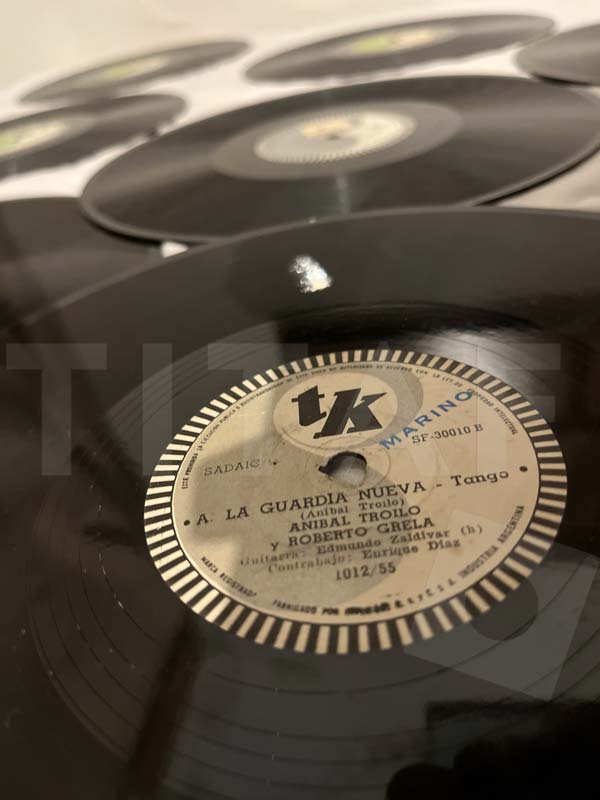



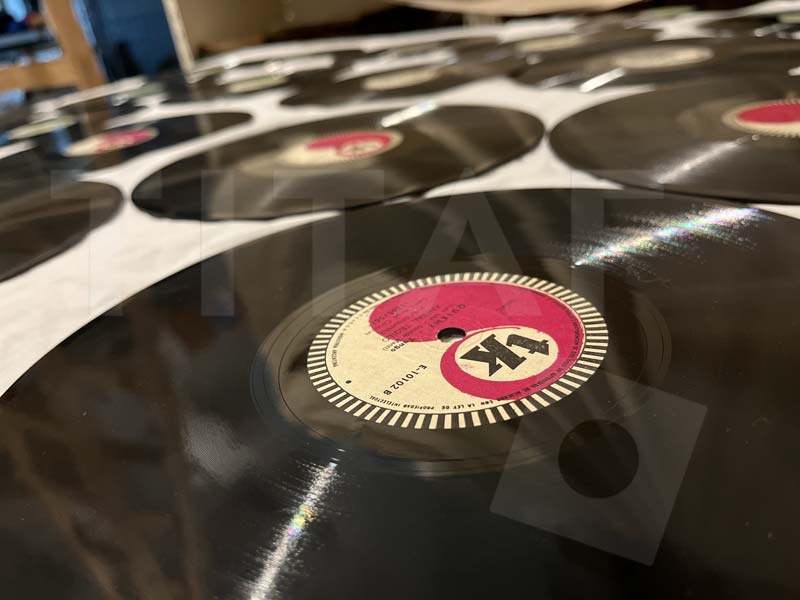

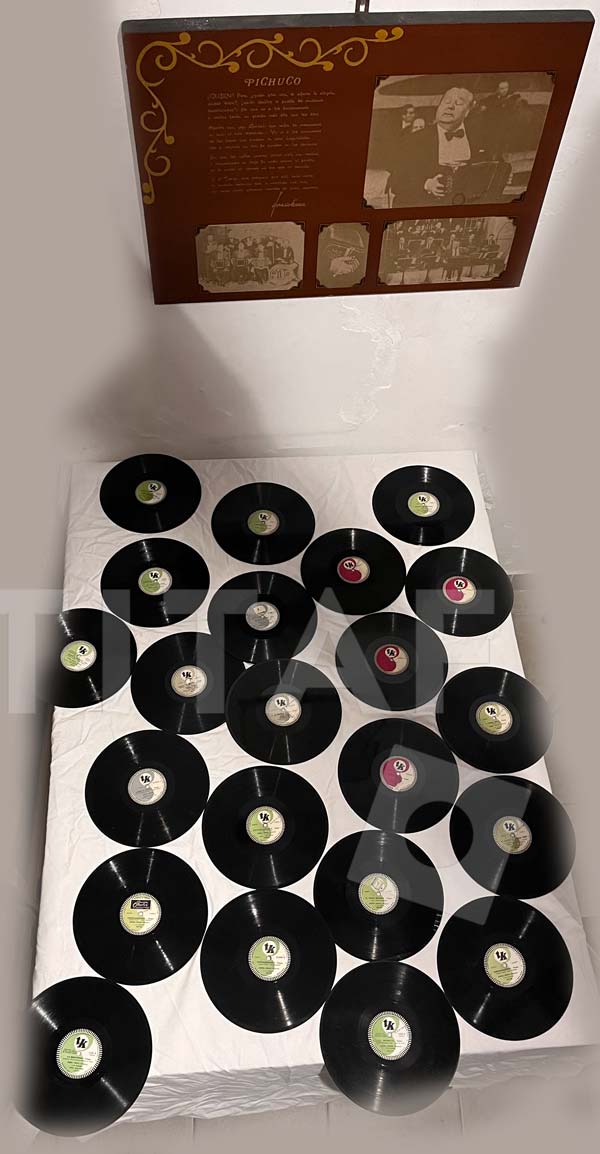

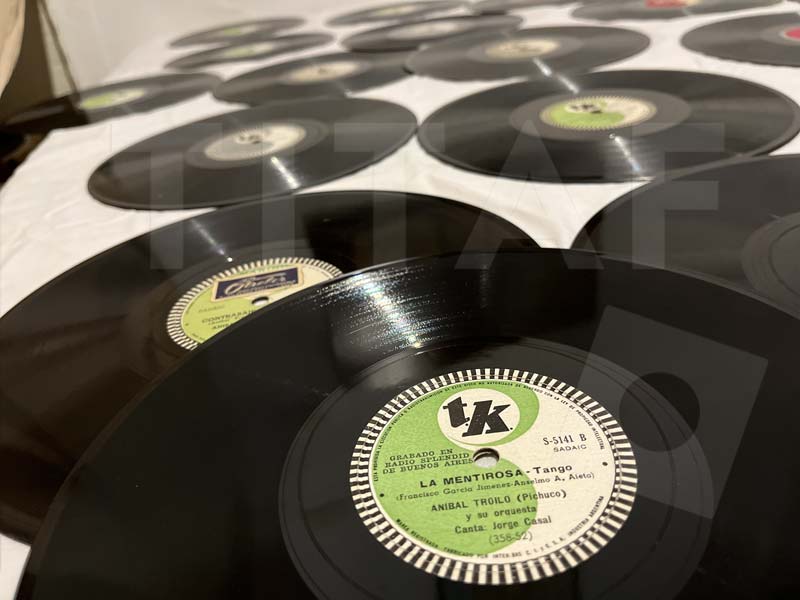

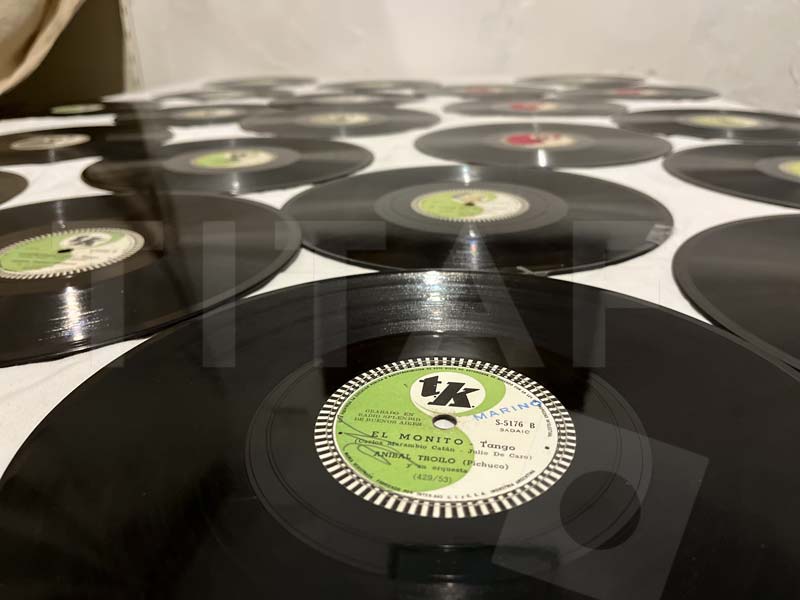

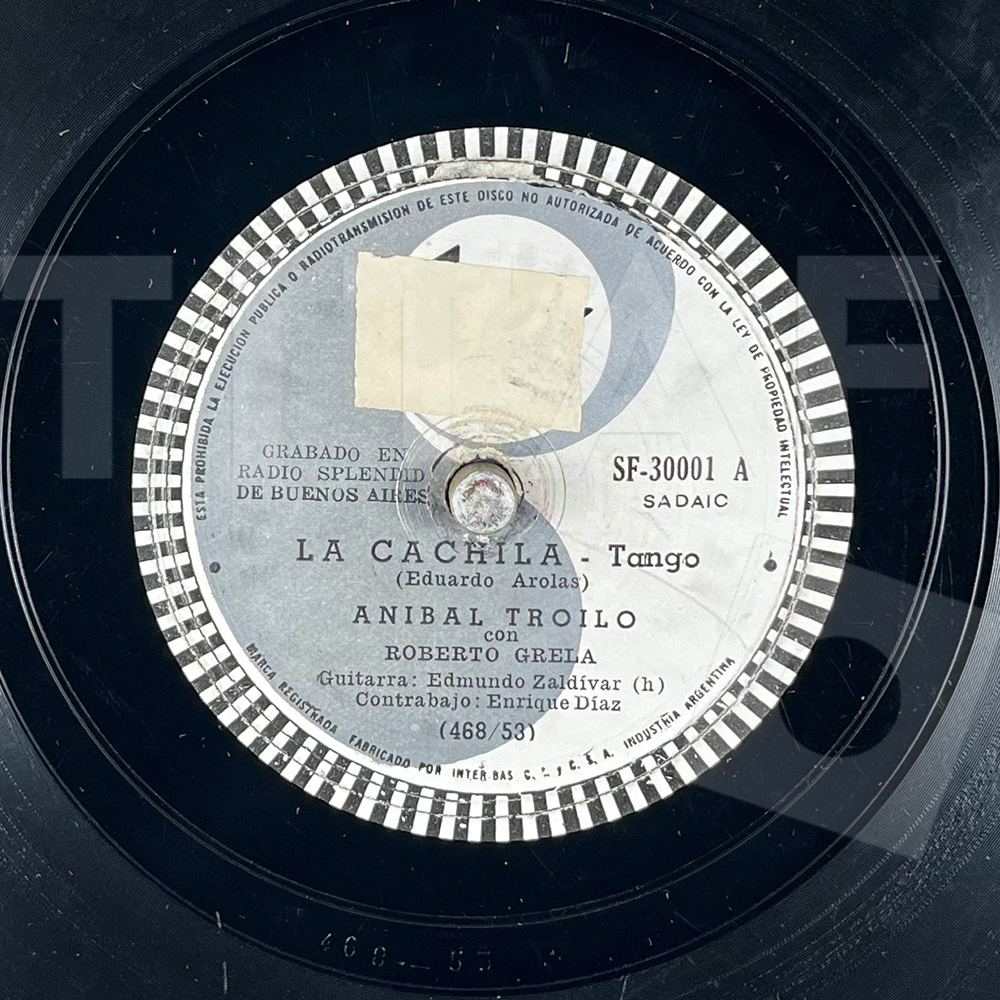

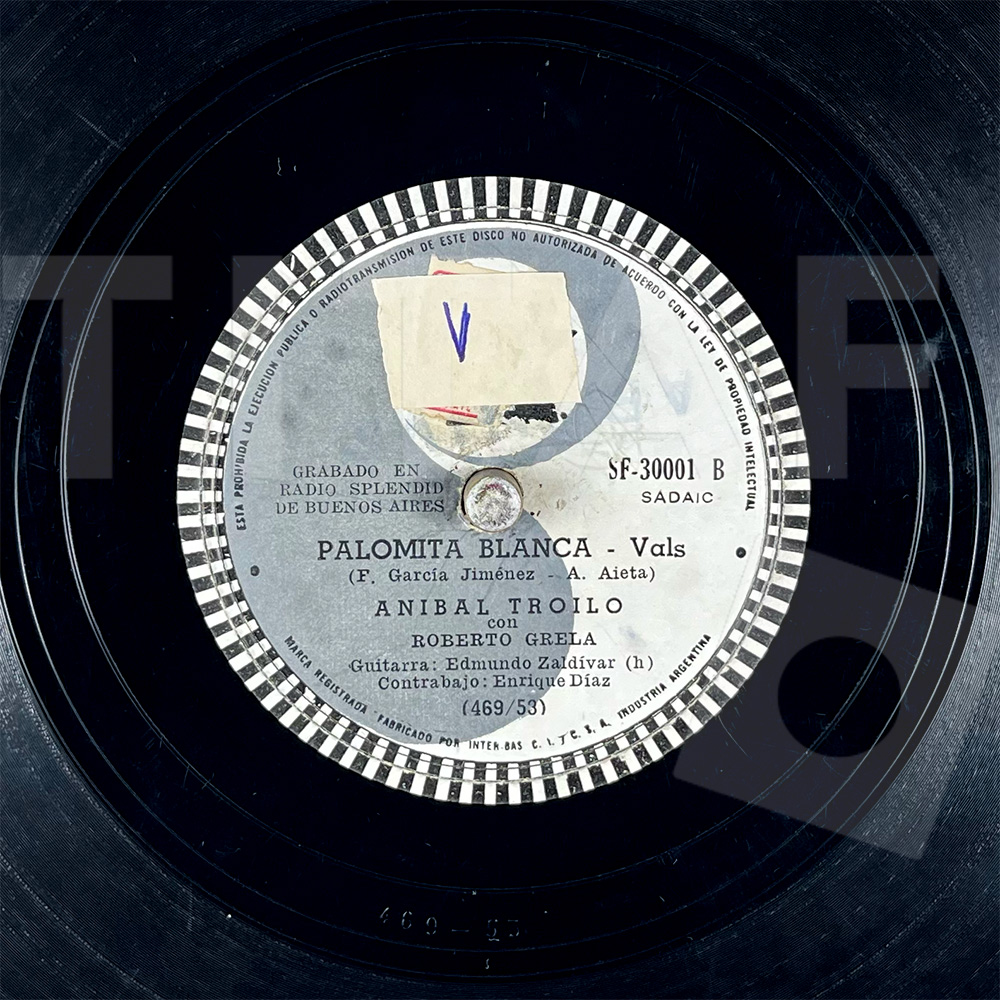

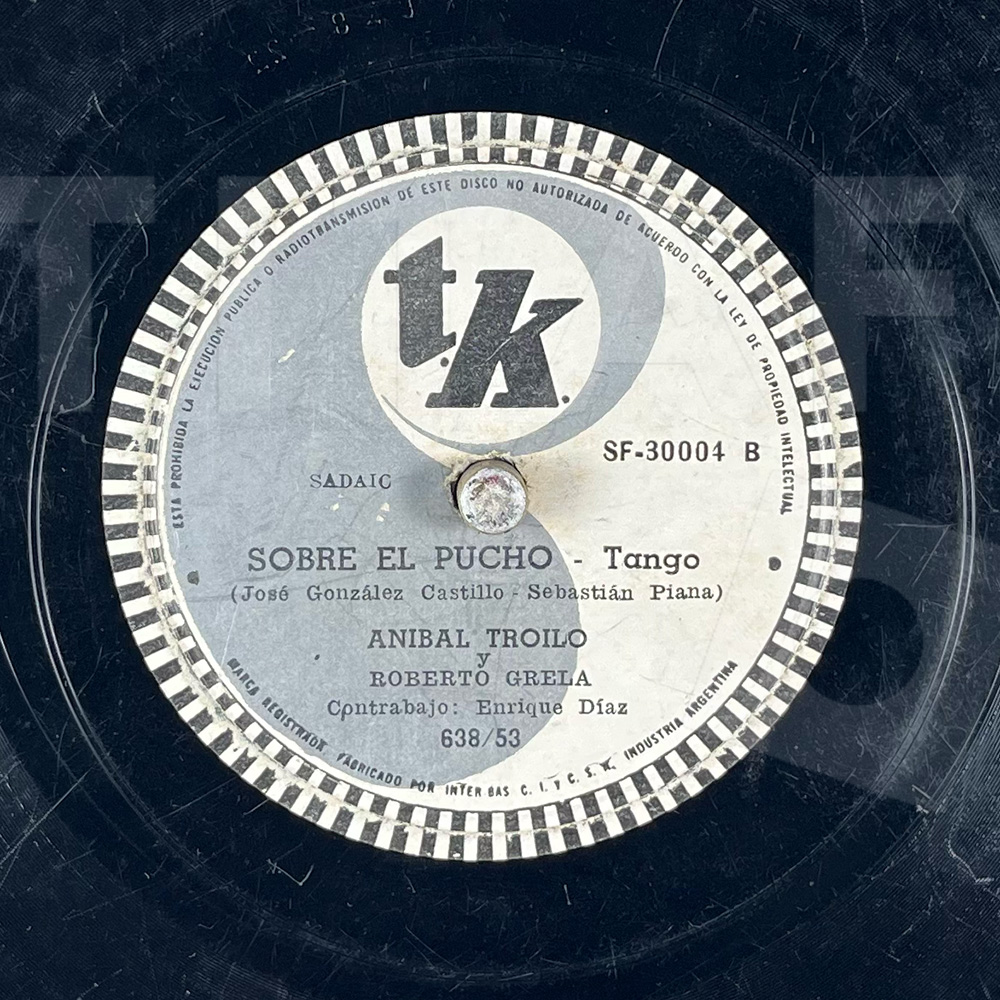



Troilo and Grela
This summary is based on an article by Diego Fischmann - eldiarioar.com - dated May 4, 2024. Diego Fischerman is the author of the blog "El sonido de los sueños".
The era with the TK label was fundamental for Aníbal Troilo, marked by the formation of innovative small groups and significant collaborations. During this period, Troilo formed a quartet with Roberto Grela on guitar, Edmundo Zaldívar (son) on guitarrón, and Kicho Díaz on double bass. This quartet debuted in the first recordings in 1953 with the tracks "La Cachila" and "Palomita blanca." In the same year, they recorded "A Pedro Maffia" and "Sobre el pucho," although the latter appears cut in many editions.
In 1954, Troilo and Grela recorded "Diablito" and "Un placer" as a trio with Kicho Díaz. In 1955, again as a quartet, they recorded "La Cumparsita," "Nunca tuvo novio," "Mi refugio," "A la guardia nueva," "El abrojito," and "Guardia nueva." In these recordings, the interplay and call-and-response between Troilo and Grela were outstanding, showcasing great naturalness and virtuosity in their performances.
In 1962, the quartet reunited with new members: Ernesto Báez on guitarrón and Eugenio Pro on double bass, and recorded an LP for the RCA Victor label titled "Troilo-Grela." This album is a testament to Troilo's legacy and his ability to reinvent himself and explore new musical horizons.
A significant moment was the recording of "Nocturno a mi barrio" in 1968, with a renewed version of the quartet that included an electric guitar, a piano, and a double bass. This piece reflects Troilo's deep connection with his neighborhood and childhood.
Leopoldo Federico also formed a quartet with Grela and recorded several albums that reflect the same mastery and musical sensitivity that characterized Troilo and his quartet.
The recordings of the quartet show the ability of Troilo and Grela to create an intimate and collaborative atmosphere, highlighting their natural virtuosity. Despite the technical difficulties of the recordings at TK, the musical quality of these sessions remains evident and represents one of the most creative and innovative periods of Troilo.
In summary, Troilo's era with TK is remembered for its atypical formations, the collaboration with Roberto Grela, and the exploration of new musical horizons that enriched and modernized tango.
Cuarteto Troilo-Grelo, Palomita blanca, tk, 1953
Cuarteto Troilo-Grelo, La cumparsita, tk, 1955


The following compilations of Aníbal Troilo are available on TangoTunes.
